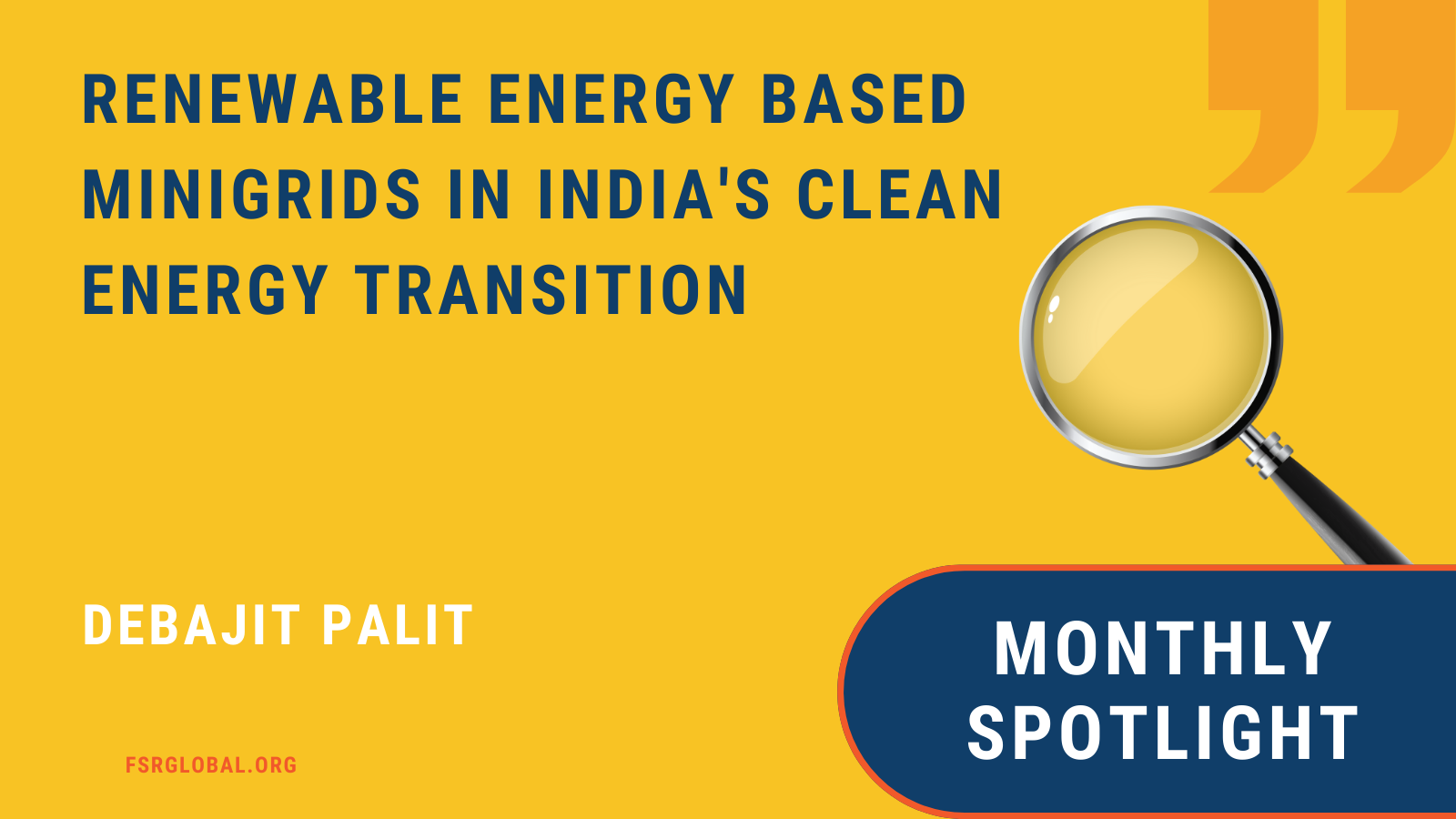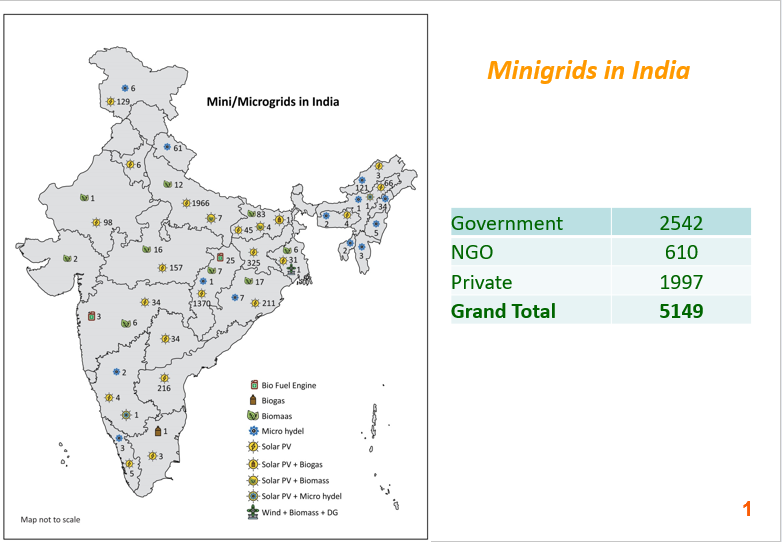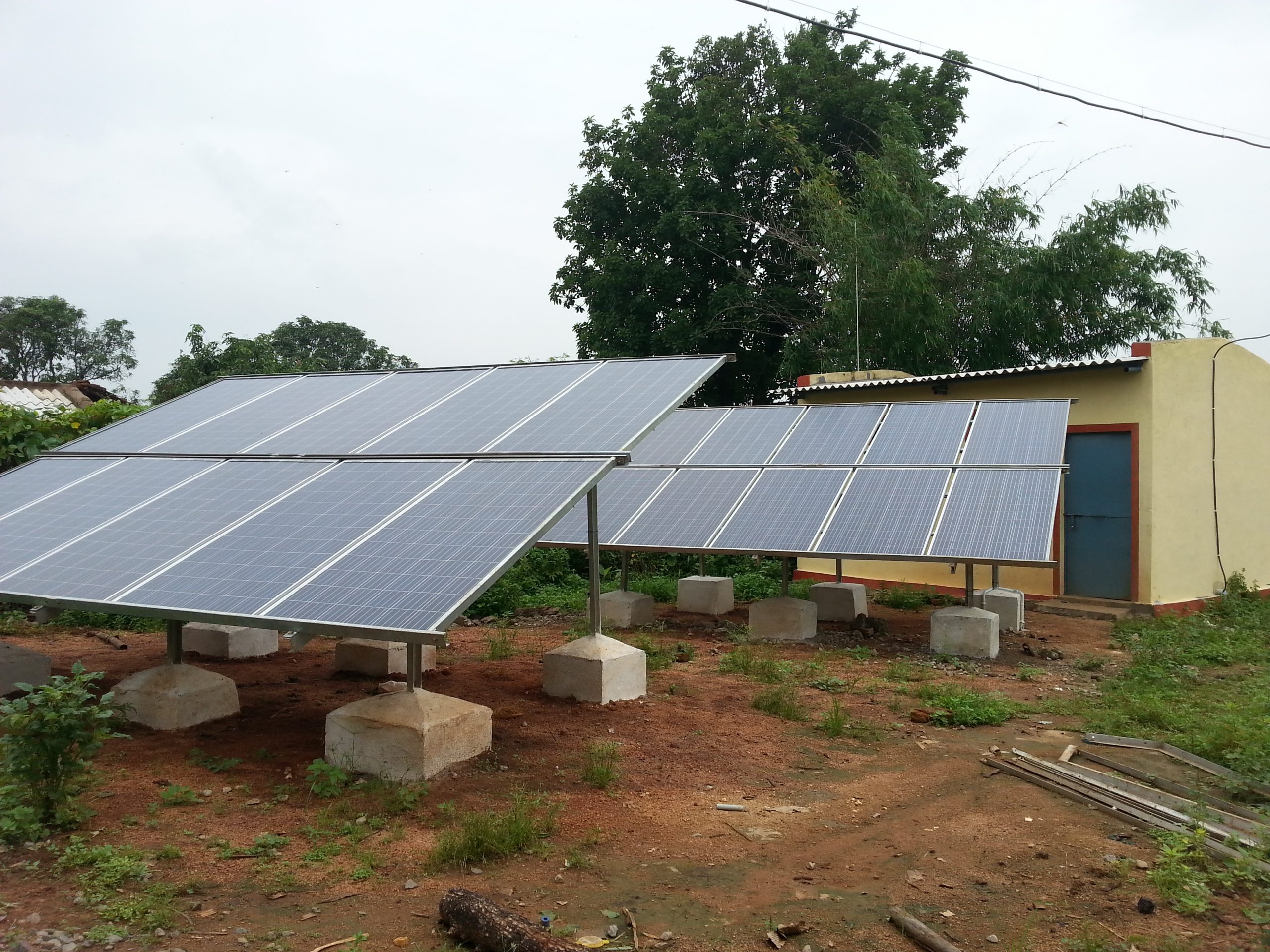MONTHLY SPOTLIGHT
Potential of Renewable Energy based Minigrids in India’s Clean Energy Transition

Debajit Palit, NTPC School of Business
Monthly Spotlight
Jan 25, 2024
India has made a remarkable achievement by electrifying all its census villages and has also achieved near universal electrification under the PM Saubhagya scheme by connecting more than 28 million unelectrified homes within a span of less than three years. The Saubhagya scheme, launched in 2017, was unique as it focussed on household electrification at a scale. The International Energy Agency (IEA), in 2018, rated India a ‘star performer’ in terms of achieving the milestone of providing electricity connections to more than half a billion people since 2000 and electrifying all its villages.
The near-universal electrification was achieved in India mostly by expanding the central grid. However, distributed renewable energy (DRE), especially solar mini-grids, also played a key role in expanding the electrification in remote villages, which were inaccessible because of physical constraints or because it was not economically viable to expand the central grid. In addition, mini-grids have also been implemented for demonstration of different technologies such as solar, biomass gasification, and micro-hydro, among others, with a cumulative of more than 5000 mini grids of varying capacities installed in India under government programs as well as by private developers and NGOs (refer figure mini-grids in India).

Fig 1: Minigrids in India, Source: Author, 2019
Beyond Chhattisgarh and West Bengal, solar minigrids, stand-alone or in hybrid mode, have also been implemented in other states such as Andaman and Nicobar Islands, Bihar, Madhya Pradesh, Maharashtra, Meghalaya, Odisha and Uttar Pradesh under different rural electrification schemes of Government of India with varied success rate.
Evolution of Minigrids in India
The solar minigrids in India have evolved with time and changing priorities of societies. The evolution has not only been limited to technical dimensions of project development, but also to other dimensions such as innovative delivery and financial models. Putting it in a chronological order, the first phase of deployment of minigrids that happened during early 1990s till early 2000 focused on developing pilots, technology demonstration and testing of the institutional models. The second phase focused on deployment of these models as an effective vehicle of electrification of remote and forested villages primarily under the Indian government supported Remote Village Electrification programme that was initiated in 2001. This phase also experimented in deploying larger capacity minigrids as well as hybrid minigrids. This was also the phase when the Electricity Act was notified and minigrid model was included as a means for providing rural electricity supply. The current phase of minigrid development, since the last decade, is experiencing the entry of private sector developers, thereby, also bringing in technical and institutional innovations and also the development of smart minigrids for better supply and demand side management.
Solar minigrids in Chhattisgarh, India
The concept of solar minigrids in India was pioneered in the 1990s in the Sunderban delta region in the state of West Bengal, and in the forested region of Chhattisgarh state (then part of Madhya Pradesh). A solar PV power plant of 25 kWp capacity installed in 1995–1996 by the West Bengal Renewable Energy Development Agency (WBREDA) in Kamalpur village of Sagar Island, continued to provide electricity to its consumers until a few years back. In Chhattisgarh, the first solar power plant was installed at a village called Lamni in Bilaspur district in the early 1990s.
At its peak, in the last decade, Chhattisgarh had a cumulative capacity of around 4 MWp of solar mini grids, covering 1440 villages, implemented by the Chhattisgarh Renewable Energy Development Agency (CREDA). With expanding grid, the number of villages getting electricity from minigrids in the state has now reduced to less than 1000 but CREDA can still boast to be the operator of the largest number of minigrids anywhere in the world. Most of these minigrids have been installed in Raipur, Korba, Jashpur and Koria districts, which accounted for around two-thirds of the total installed capacity. These districts are under dense forest cover and thus traditionally have had higher number of un-electrified villages.

Fig 2: Mini grid in Ravan village, Chhattisgarh
Of the total installed capacity, some minigrids were also dismantled by CREDA due to solar panel theft and poor management by villagers, as well as owing to the grid expansion by the state electric utility. Interestingly, the dismantled systems have also been utilised – (1) those villages where there was an increasing demand for solar power, the capacity was augmented by providing with new capacities using the dismantled systems (2) the dismantled systems were also used for retrofitting to replace malfunctioning components such as faulty battery, solar panels, etc.
Another interesting aspect observed in Chhattisgarh is the longevity of the battery bank. The battery bank in most power plants was found to have lasted for around 8 years, much higher than the usual battery life of 4–5 years prevalent in most other states. The longer battery life has been ensured by CREDA by keeping a tab on the quality of battery purchased and by controlling the damage through misuse or overloading of battery capacity through routine monitoring and maintenance, using the three-tier model of operation and maintenance (O&M). While the implementation essentially followed a top-down approach, there are several actors involved in the process including state, private as well as local actors imbibing the essence of a pro-poor public–private partnership model. The provincial and federal governments provided the policy support and financial assistance to set up and operate the power plants, while the private sector was made responsible for installation, O&M services.
In most of the states in India, where mini-grids have been implemented, either by state renewable energy development agencies or NGOs, the system operator under the supervision of the Village Energy Committee is usually made responsible for O&M of the mini-grids. However, in Chhattisgarh, CREDA developed its own innovative model by standardising all aspects of O&M. The model is called ‘Cluster based service delivery model’ or GOLD (Group the partners, Organize their skills, Allocate load in villages, Deliver service), where the installation is steered by CREDA and O&M of the plants is undertaken through a three-tier setup (local villages, district and state), thus ensuring successful operation of these plants during the last two decades.
Challenges in Sustainability
One of the major challenges faced by most minigrids in India is challenges in O&M due to inability of resource poor consumers to pay cost reflective prices for electricity. Due to significant infrastructure investment demands, minigrid tariffs often exceed government-subsidised rates. Thus, in most cases it is only considered as a stop-gap solution until the main grid access becomes available. Excluding minigrids from regulatory benefits, such as cross-subsidies applicable to grid connections, further hindered their expansion in India.
However, Chhattisgarh developed a unique model where the state government provided the same level of operational subsidy for grid-connected and off-grid systems, which the state agency could effectively use to enhance operational viability of its minigrid interventions. Thus, from a policy perspective, the minigrid based electrification requires a clear set of rules that recognises the specific features of minigrid business and a suitable regulatory system that supports such businesses. While in 2016, the Ministry of New and Renewable Energy attempted to develop a national policy on minigrids, aiming to establish a minimum of 10,000 micro/mini-grids powered by renewable energy sources, the policy was never notified.
Future of minigrids
An IEA study in 2011 observed that for global universal electrification, expansion of central grid is the most effective option only for urban settlements and 30% of non-electrified rural areas. For the vast remaining 70% population in rural areas, DRE are better choices with minigrids and standalone solutions occupying a 65:35 share. This figure has dominated the discourse for almost a decade before it was revised to 50% of the rural population in 2019. However, for success of the minigrids, an enabling policy and regulatory framework, along with other aspects (such as technical, social and economic factors), will be required. The key factors to consider include, among others, clarity in legal, regulatory and licensing requirements, tariff regulations, financial support mechanism, quality benchmarks, and finally interconnection with the central grid if it is extended to the settlements or minigrids are set up in grid connected areas that have reliability challenges.
India with huge experience in the minigrids sector, the concept could offer a viable solution, where decentralisation is gaining traction driven by the need for decarbonisation and further fuelled by the adoption of digital technologies. This shift makes renewable energy based minigrids, especially inter-connected with each other and/or with the central grid, a viable choice, not only for rural areas but, potentially, even more advantageous for urban set-ups. Minigrids with some tariff parity through regulation, and smartness through better use of technology and the Internet of Things, can affect a paradigm improvement from the present inefficient model of electricity distribution to a more developed market-based model of electricity distribution. However, a shift from the kW level to sub-MW scale minigrids may be needed so that both domestic and productive loads are supported at grid competitive prices. The minigrids, interconnected with individual DRE systems at prosumers’ homes (such as rooftop solar), and further connected with the central grid to take and feed electricity, along with decentralised management, is the future.
(The author is a Professor of Energy at NTPC School of Business, Noida. Views are personal)
